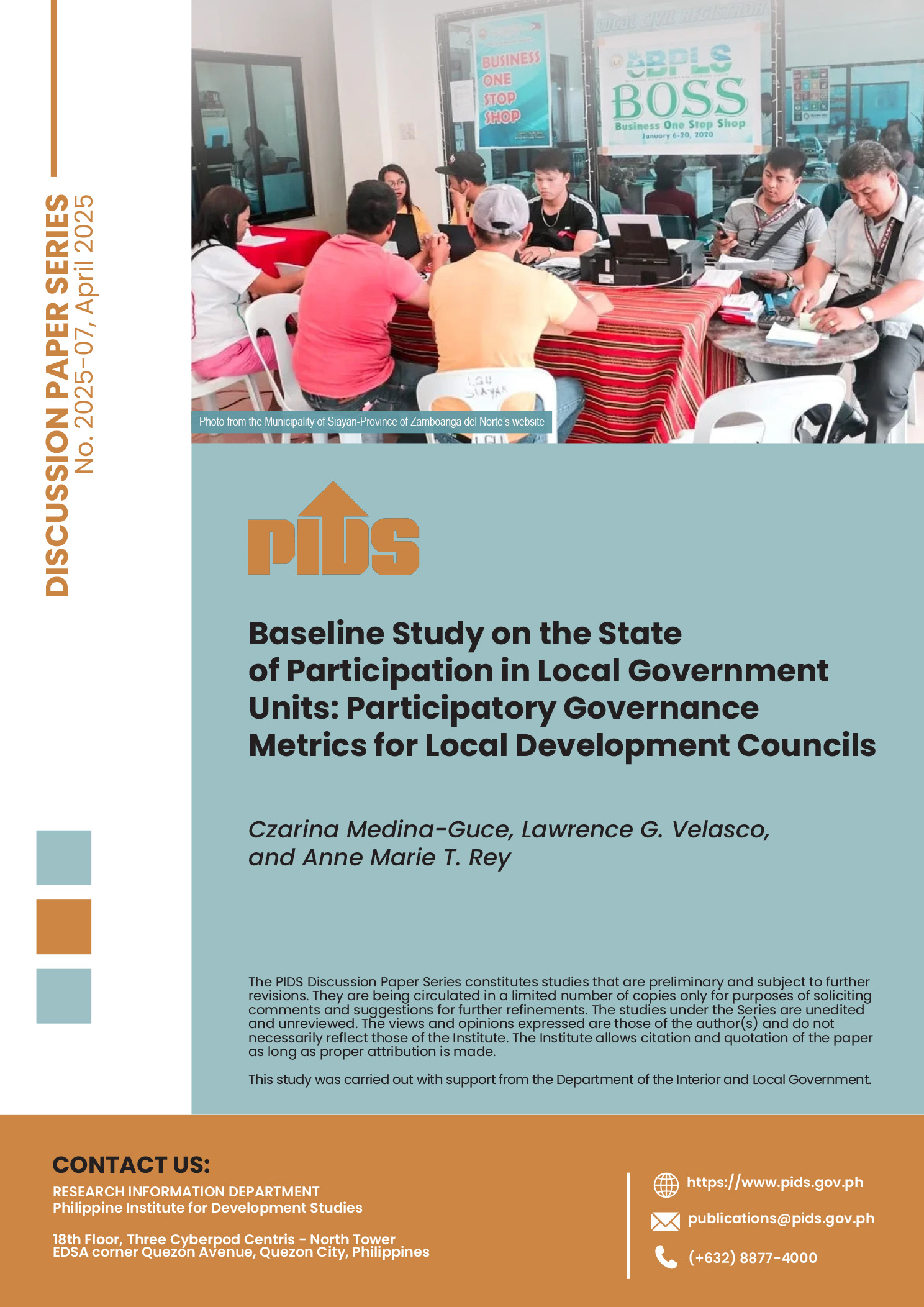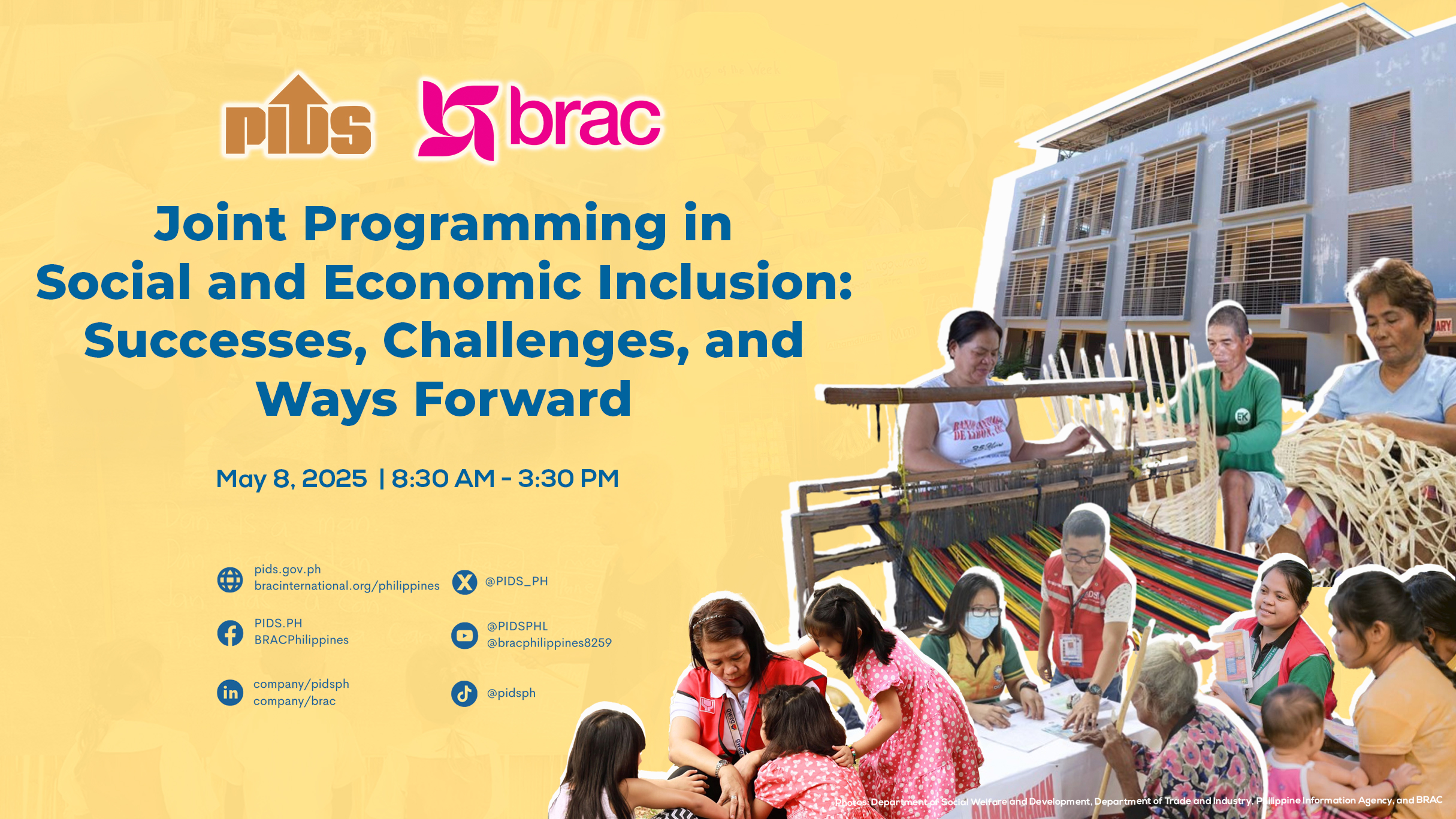The national government (NG) must improve the country’s resilience to economic shocks, including disasters, according to a Philippine Institute for Development Studies (PIDS) discussion paper.
In the paper, titled “Risks, Shocks, Building Resilience: Philippines,” PIDS President Gilbert Llanto said the government has not provided sufficient policies and budgets to make this happen.
Llanto added that the government must create evidence-based policies and steps that will prepare and strengthen the country to counter impacts of interconnected risks and adverse shocks.
“It is obvious that there is a need for more empirical studies on macroeconomic and microeconomic vulnerability, and how systems resilience can be boosted and strengthened,” Llanto said.
“But, alas, it seems that decision-makers provide only token support to this objective, policy-wise and budget-wise, given the meager resources and attention given to policy research, research and development and the production of knowledge products in general,” he said.
Llanto, citing data from the 2014 World Risk Report, highlighted the vulnerability of the Philippines to various shocks. Data showed the Philippines is 52.46-percent exposed to these shocks and is ranked third worldwide.
Exposure, the study said, referred to population, conditions of built-up areas, infrastructure component, environmental area that are being exposed to the impacts of one or more natural hazards.
This is because there are many low-lying, and even coastal, communities in the Philippines that can be at risk in the event of typhoons and other natural disasters, such as sea-level rise.
Further, the same data showed the Philippines is ranked second globally in terms of risk, which is the interaction between exposure to natural hazards, including the adverse effects of climate change, and the vulnerability of societies.
“The Philippines is peculiarly challenged to build economic resilience as indicated by its high risk exposure and vulnerability,” Llanto said.
“Building economic resilience assumes critical importance because it is impossible to insulate the economy from interconnected risks and shocks,” he added.
Some of the measures that the government instituted to respond to shocks in recent years include the Comprehensive Livelihood and Emergency Employment Program, the Conditional-Cash Transfer (CCT) and the National Food Authority’s Rice Access Program.
These were instituted under the Arroyo administration to respond to the 2009 global financial crisis and the rice-price crisis in 2008.
The CCT, known locally as the Pantawid Pamilyang Pilipino Program (4Ps), is still in effect today and has recently been expanded to include high-school students.
It provides grants to poor families if they send their children to school, visit health centers and attend family-development sessions.
Since the program’s inception, the number of CCT partner-beneficiaries increased from 340,000 to more than 4.4 million at the end of 2015—making it the fourth-largest CCT after programs in India, Brazil and Mexico.
The program has expanded rapidly since it began in 2008 and has evolved over time based on lessons and experience.
Examples of evidence-based program adjustments include first increasing the grant amount for older children and expanding the eligibility cut-off from 14 years of age to 18 to raise the rates of high-school graduation of children from poor families.//
In the paper, titled “Risks, Shocks, Building Resilience: Philippines,” PIDS President Gilbert Llanto said the government has not provided sufficient policies and budgets to make this happen.
Llanto added that the government must create evidence-based policies and steps that will prepare and strengthen the country to counter impacts of interconnected risks and adverse shocks.
“It is obvious that there is a need for more empirical studies on macroeconomic and microeconomic vulnerability, and how systems resilience can be boosted and strengthened,” Llanto said.
“But, alas, it seems that decision-makers provide only token support to this objective, policy-wise and budget-wise, given the meager resources and attention given to policy research, research and development and the production of knowledge products in general,” he said.
Llanto, citing data from the 2014 World Risk Report, highlighted the vulnerability of the Philippines to various shocks. Data showed the Philippines is 52.46-percent exposed to these shocks and is ranked third worldwide.
Exposure, the study said, referred to population, conditions of built-up areas, infrastructure component, environmental area that are being exposed to the impacts of one or more natural hazards.
This is because there are many low-lying, and even coastal, communities in the Philippines that can be at risk in the event of typhoons and other natural disasters, such as sea-level rise.
Further, the same data showed the Philippines is ranked second globally in terms of risk, which is the interaction between exposure to natural hazards, including the adverse effects of climate change, and the vulnerability of societies.
“The Philippines is peculiarly challenged to build economic resilience as indicated by its high risk exposure and vulnerability,” Llanto said.
“Building economic resilience assumes critical importance because it is impossible to insulate the economy from interconnected risks and shocks,” he added.
Some of the measures that the government instituted to respond to shocks in recent years include the Comprehensive Livelihood and Emergency Employment Program, the Conditional-Cash Transfer (CCT) and the National Food Authority’s Rice Access Program.
These were instituted under the Arroyo administration to respond to the 2009 global financial crisis and the rice-price crisis in 2008.
The CCT, known locally as the Pantawid Pamilyang Pilipino Program (4Ps), is still in effect today and has recently been expanded to include high-school students.
It provides grants to poor families if they send their children to school, visit health centers and attend family-development sessions.
Since the program’s inception, the number of CCT partner-beneficiaries increased from 340,000 to more than 4.4 million at the end of 2015—making it the fourth-largest CCT after programs in India, Brazil and Mexico.
The program has expanded rapidly since it began in 2008 and has evolved over time based on lessons and experience.
Examples of evidence-based program adjustments include first increasing the grant amount for older children and expanding the eligibility cut-off from 14 years of age to 18 to raise the rates of high-school graduation of children from poor families.//












